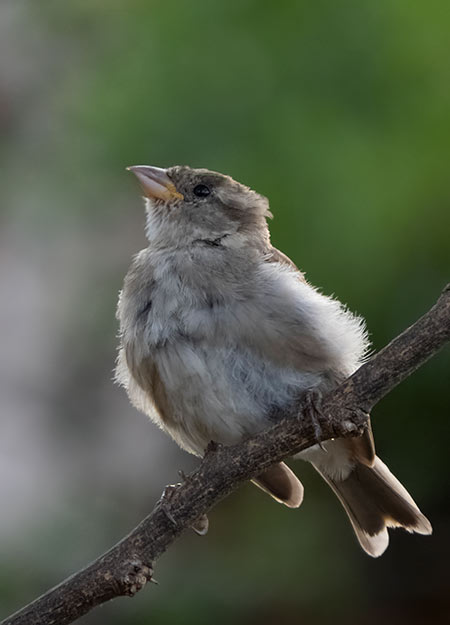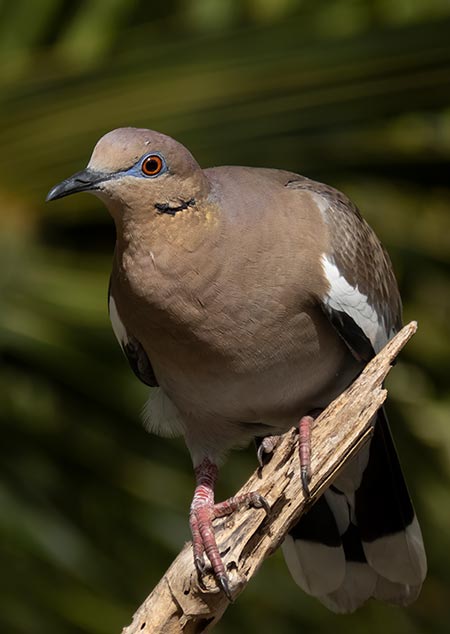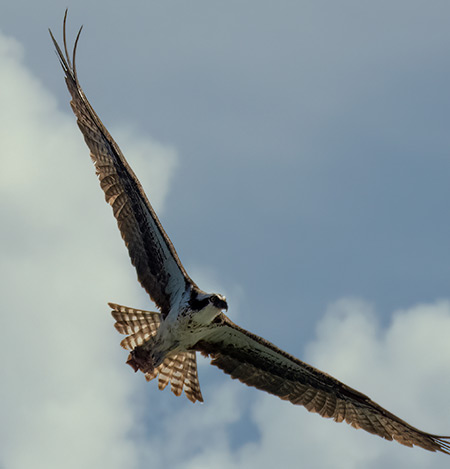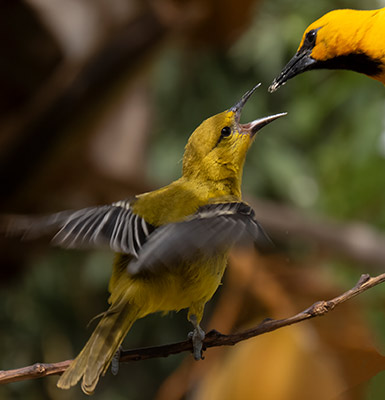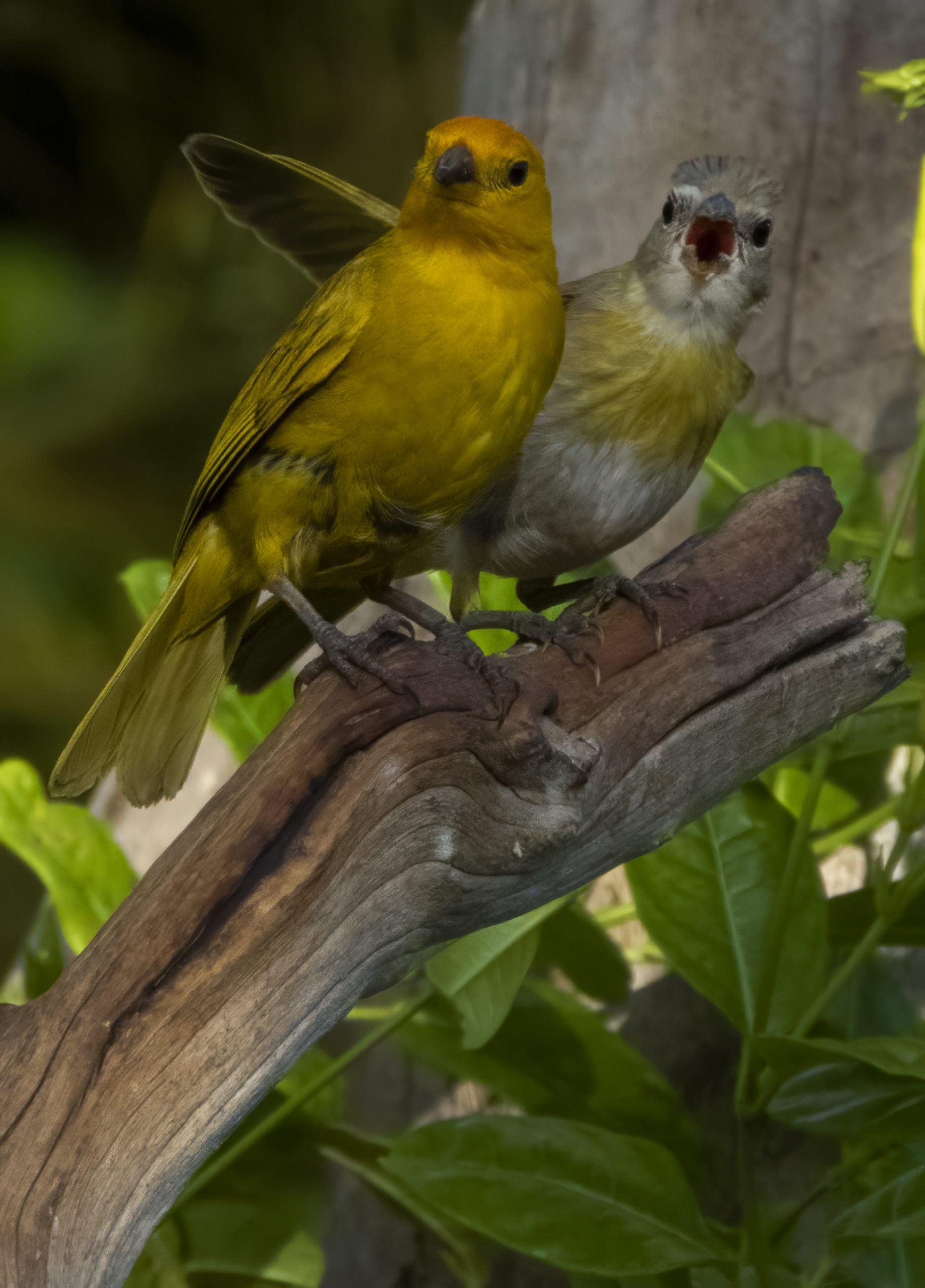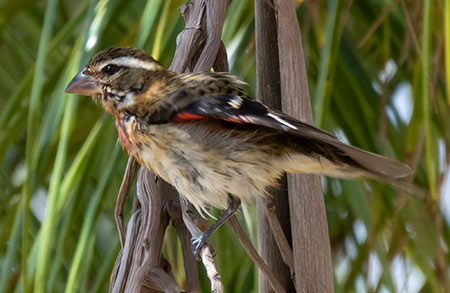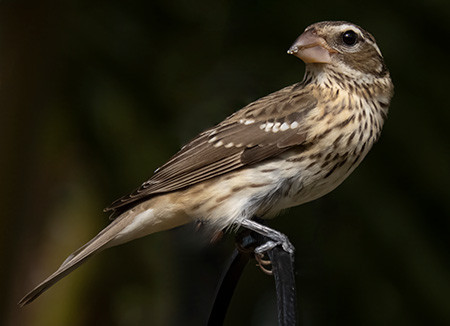Slow Birding in Bonaire’s Gardens and Backyards
A Guide to Discovering Birdlife in Your Own Backyard
A year’s journey of slow birding on Bonaire.
Inspired by Dr. Joan E. Strassmann’s captivating book, “Slow Birding: The Art and Science of Enjoying the Birds in Your Own Backyard,” in 2023 I embarked on a year-long adventure in my “home patch.” Armed with curiosity, a comfortable chair, and of course my camera, my garden was transformed before my eyes into a personal aviary. This wasn’t a race to check off species, but a mindful immersion into the feathered world of Bonaire’s garden birds.
As the seasons wove their magic, I witnessed the choreography of the birds – resident birds engaged in territorial dances, rare migrants used the garden as a safe resting and feeding spot before continuing their journeys, the hierarchies illustrating which birds reigned supreme were in evidence, and I even witnessed some bird “love” with the young that such activities ultimately bring. Each day brought fresh discoveries, revealing the intricate web of interactions that unfolded before my eyes.
By embracing the slow birding philosophy, I shed the rush of checklists and instead embraced the whispers of Bonaire’s wind through feathers. A year later, I stand not just as an observer, but as a full-fledged “aficionado” of the slow birding movement. My garden is no longer just an area through which I walk to get to the street; it’s a vibrant stage where nature’s drama unfolds, one captivating scene at a time, as well as where I say bon dia (good morning) to birds that I can now recognize as individuals.
What is the slow birding movement?
Slow birding is a method of birdwatching that prioritizes the experience of being in nature over the pursuit of checking off species on a list. It’s about taking the time to watch a bird, understand its behavior, and appreciate its beauty. Instead of rushing from one bird to the next, slow birding encourages you to pause and observe a bird for as long as you like, learning about its habits, habitat, and characteristics. This approach to birdwatching is more relaxing and can be just as fulfilling as traditional birding, and it’s a great way to get to know the birds of Bonaire that are present right in your backyard. So let’s begin the journey!
Beginning the year with a bang!
The arrival of Bonaire’s first-ever White-winged Dove.
The year began innocently enough. On January 1st, 2023, birds flitted around my garden, familiar faces in their daily routine. Then, a flash of unusual plumage caught my eye: a dove unlike any I’d seen before. A white wing bar stood out, but this wasn’t your average Bare-eyed Pigeon, prompting my birder brain to engage – check the bill, check the legs, scrutinize every detail. This was foreign territory, literally and figuratively.
Instinct kicked in. “Shoot first, ask questions later,” they say. Click, click, click! The camera captured the bird’s strange behavior – an exaggerated tail thrust, unlike any dove I’d witnessed on Bonaire. This mystery guest, soon identified as a White-winged Dove (Zenaida asiatica), graced my garden for ten magical minutes on its first visit on New Year’s Day, offering ample opportunity for photos and even video of its unique tail display.
Excitement surged. eBird confirmed it: no White-winged Dove had ever been documented on Bonaire! These doves typically reside in the southern US, Central America, and the northern Caribbean. While their range was expanding, Bonaire seemed lightyears away from any known population.
The plot thickened. Doves aren’t migratory, so a solo flight seemed unlikely. Could it have hitched a ride on a ship, jumping ship on Bonaire’s shores? While this “lifer” sighting sent shivers down my spine, and marked the first confirmed White-winged Dove on Bonaire, its potential “human assistance by ship” meant it wouldn’t officially join the island’s bird list.
For three glorious months, the White-winged Dove ruled my garden. Its territorial antics entertained me and fellow birders, a constant reminder of nature’s unexpected wonders. Even if it wasn’t a traditional addition to the list, this feathered visitor etched itself firmly in our memories, a thrill of slow birding.
The clockwork commute of a coastal commuting Osprey.
Here on Bonaire, Ospreys (Pandion haliaetus) are migratory, usually arriving in October, and then heading northward again in the spring to their breeding grounds in North America.
Ospreys have extreme site fidelity, often returning to the same location, the same tree, or even the same branch each year. Once one has learned where an Osprey perches or roosts, it’s like welcoming an old friend back each year, one with wings and a penchant for seafood.
For the past four winters, I’ve had the privilege of witnessing an Osprey’s circadian rhythm. As the first blush of dawn paints the sky, I stand in my garden, eyes scanning the horizon. Then, there it is: “my” Osprey, gliding effortlessly overhead, its silhouette stark against the sunrise. This isn’t a leisurely stroll; it’s a commute with a purpose – the ocean beckons, promising bountiful fishing grounds. The day unfolds as the Osprey dives and soars, a master of its aquatic domain.
Evening paints the sky anew, and just as the last rays dip below the horizon, my feathered friend reappears. After the day’s work is accomplished, it’s back to commuting to its winter roost, to settle in for a well-deserved rest. Each day, this dance repeats, a testament to the quiet rhythms of nature. “My” Osprey’s daily commute may not involve rush hour traffic, but it’s no less impressive.
Slow birding places an emphasis on avian behaviors.
Territorial defense.
Move over, Hollywood! Backyard birding can deliver its share of high-adrenaline drama, and this encounter between Tropical Mockingbirds (Mimus gilvus) proves it, as these feathered gladiators put on a show that will have you raising your eyebrows in surprise (and maybe chuckling a bit).
In this clash, the stakes are high: territory. One mockingbird, the resident male, which can be identified by his parasitic legs, guards his domain with fierce resolve. His challenger, a young upstart, throws down the gauntlet, initiating a dance of dominance. Watch closely for the dramatic tail thrusts – they’re not just fancy footwork, but a potent display of territorial intent.
But fear not, as this battle doesn’t end in tragedy. After a flurry of fury, the young upstart gives up and retreats unharmed to find his own territory. The resident male retains his hard-earned home, vigilantly keeping watch from his perch atop the mailbox.
Lots of love means lots of baby birds!
During my first year of slow birding in my “home patch,” I witnessed the wonders of procreation firsthand, as several native and naturalized species embraced the call of nature. Eared Doves (Zenaida auriculata) and Carib Grackles (Quiscalus lugubris) built nests in my garden, transforming it into an avian nursery. While always attempting to observe from afar, even the simple act of living can pose a threat to these soon-to-be parents.
An unforgettable moment unfolded when, in the blink of an eye, a female Carib Grackle swooped down from her nest, her scolds echoing through the air, as she righteously reprimanded me for disturbing her while trying to dispose of the trash. Needless to say, I beat a hasty retreat!
Unexpected Treasures: When Slow Birding Rewards You with Rarities.
Slow birding isn’t just about familiar faces. Spend enough time in your “home patch” and nature might surprise you with a feathered jewel you never expected. These rare visitors, often taking a well-deserved rest during their epic migrations, can come from as far north as Canada, their journeys ending in the lush landscapes of South America.
Imagine my delight when, amidst all the familiar resident birds, a stunning male Rose-breasted Grosbeak (Pheucticus ludovicianus) perched in a coconut tree. He enjoyed the garden for a few days, but then his travels continued. But the surprises weren’t over! Within two days, a female of the same species arrived, seeking her own “R&R.” For two days, she was present, ever mindful that she was a visitor to the garden, keeping a submissive low profile with the other garden birds.
From Garden Chair to Birding Bonanza: My Year of Slow Birding.
After a year of slow birding in my garden, one thing is crystal clear: I’m hooked! While exploring Bonaire’s diverse habitats for hidden avian gems remains a thrill, there’s a newfound joy in simply settling into my garden with a cup of coffee and becoming immersed in the lives of my feathered neighbors.
2023 was a year of abundance in my “home patch,” with 28 species gracing my garden. Sure, some were familiar faces, chirping their daily routines. But what truly transformed the experience was the deeper understanding I gained. Witnessing their intricate breeding rituals, deciphering their unique behaviors, and even recognizing individual birds – it all unfolded like a captivating story right outside my house. I can’t wait to discover what surprises 2024 may bring!
So, will you join me on your own slow birding adventure? I’d love to hear about the avian friends who brighten your world! Let’s turn our backyards into havens of connection and discovery, one captivating chirp at a time. Happy slow birding!
Sign up to receive notifications when a new article is posted.
About the author:
 Susan has been living on Bonaire for over 30 years. She is a certified bird guide, as well as a topside and underwater photographer. She is a 2016 graduate of the Caribbean Birding Trail Interpretive Guide Course conducted by BirdsCaribbean.
Susan has been living on Bonaire for over 30 years. She is a certified bird guide, as well as a topside and underwater photographer. She is a 2016 graduate of the Caribbean Birding Trail Interpretive Guide Course conducted by BirdsCaribbean.
Reach out to Susan
Contact Susan via email, Facebook Messenger, give Susan a call, or simply use the online form below.
If you have any questions in regard to your birding tour on Bonaire, feel free to contact Susan to get answers. She is always happy to elaborate on routes or best times for a tour based upon your own personal preferences. Tours can be tailored to your own interests, whether that be birds, photography, or both!
It is also recommended that you do some homework about Bonaire's birds before you visit. By knowing a little bit about the birds which might be encountered on tour, your enjoyment will be heightened! Be sure to check out these resources for Bonaire Birding. Reading the Bonaire Bird Blog will also accustom you to the birds that habitually are encountered on Bonaire.
Facebook Messenger
Get in touch via Facebook Messenger
Telephone
Get In Touch
Get in touch with Susan to check availability for the dates you are visiting Bonaire.
Consent: By using this form you agree with the storage and handling of your data by this website.

